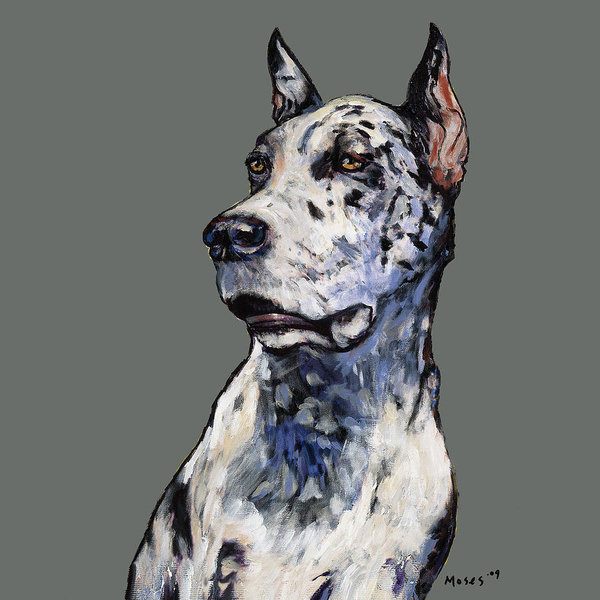
It’s been written that while prized by European aristocracy, the harlequin coat pattern is the most difficult color to breed correctly and is unique to Great Danes. It’s not as easy as simply breeding two harlequins together as this won’t guarantee a litter of beautifully marked puppies. Some harlequin Great Danes carry genes of other colors in their lines such as blue, merle, black, and more and it can take years of breeding experience before a heritage breeder determines ideal breeding combinations; until then, a breeder may have his or her share of mismarked blacks, merles and and whites.
It was Dr. Leigh Anne Clark at Clemson University who identified the variant, T>G in the PSMB7 gene as the mutation associated with the Harlequin phenotype. She also determined that over 59% of Harlequin-bred blacks or non Merle dogs (including Mantles) carry the harlequin mutation.
The Harlequin variant acts as a modifier of Merle. All harlequins must have one or two copies of the mutation responsible for Merle, as harlequin cannot be expressed in dogs that aren’t Merles, or who have only red pigment. The dominant Merle gene by itself produces a dark spotted coat on a diluted background. If a Merle dog also inherits a single copy of the Harlequin gene, the dark spots increase in size and the background pigment is eliminated. Harlequin is presumed to be homozygous embryonic lethal because no dogs have been observed with two copies of the mutated gene. Therefore, all Harlequin patterned dogs have one copy of the mutated gene.
Breeders should know that Animal Genetics offers DNA testing for the PSMB7 mutation which verifies the presence of the mutation.
Harlequin Great Dane by Dale Moses is available here.
